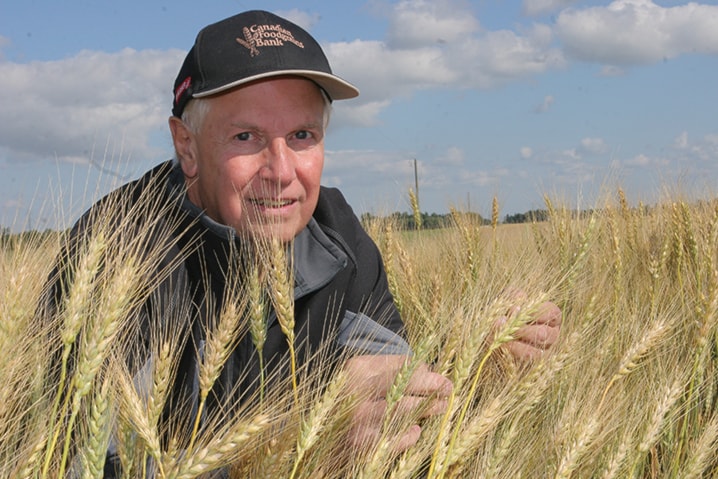A couple more weeks with neither hail nor frost will ice the cake for local farmers and volunteers who are growing wheat for the Canadian Foodgrains Bank.
For nearly 20 years, supporters in Central Alberta have been growing crops to raise money for the Winnipeg-based interdenominational group, now in its 31st year and dedicated to resolving hunger issues around the world.
The Canadian Foodgrains Bank provides food for hungry people, and it helps them develop their own resources so they have a better chance of feeding themselves, say seasoned volunteers with Foodgrains projects in Lacombe and Ponoka.
Doug Maas and Larry Henderson, who both live in Lacombe, each have a long history of organizing and publicizing their respective crop projects.
The Lacombe group, now in its 17th year, has planted its biggest crop ever on a 175-acre field about eight kilometres southeast of the city. Ponoka, on the other hand, has been operating for most of its 19 years on the same field north of Morningside, along the east side of Hwy 2.
By coincidence, both fields were planted to wheat this year.
Maas said he is not allowed to reveal whether the Lacombe group’s field was rented or donated, nor can he state the name of the owner. The field was planted to spring wheat to meet the farmer’s crop rotation program.
The seed heads have filled out nicely, but are still a bit green, so the crop needs a couple more weeks of heat and dry weather to mature, and then it looks like it could yield about 80 bushels to the acre, he said.
Lacombe’s best year on record was three years ago, when the canola crop grown that summer netted $105,000 after all the bills were paid.
Each year, a portion of seeding, fertilizer and other expenses are picked up by local agricultural businesses, said Maas. Additional money is welcome to help cover the balance of the costs, leaving cash from selling the crop to go to Winnipeg for distribution as needed.
The Lacombe and Ponoka projects each offer donors an opportunity to adopt an acre of cropland, which helps defray costs not covered by corporate donations.
The Ponoka crop is a little sparse at the tops of the hills because of heat damage, but good and even a bit heavy at lower levels, said Henderson. He is anticipating an average crop, barring an early frost or heavy snow.
Maas said the Lacombe group feels a pressing need to engage younger people in its program and is placing more emphasis on using social media to attract volunteers and donations.
Lacombe is actively recruiting for a high school student with good computer skills who would be interested in helping out.
The student would not be paid, but could be eligible to earn community service credits toward a high school diploma, said Maas.
Henderson said one of the unique aspects of the Ponoka crop is that it is fertilized with manure donated by a number of local chicken farms. Much of the wheat produced on the field goes back to feed those same chickens, making it a recycling project that spins off cash to feed hungry people.
Timing of the harvest for both crops will depend on weather and on the availability of combines and trucks.
Henderson said the Ponoka group has generally had about 200 people show up to help out and to watch the crop come in on harvest day.
Harvest days will be announced soon, subject to change if the weather gets nasty.
Henderson recalled one year, about a decade back, when the crop was very poor because of a dry summer, and then couldn’t harvested until December because of early snows.
bkossowan@www.reddeeradvocate.com
